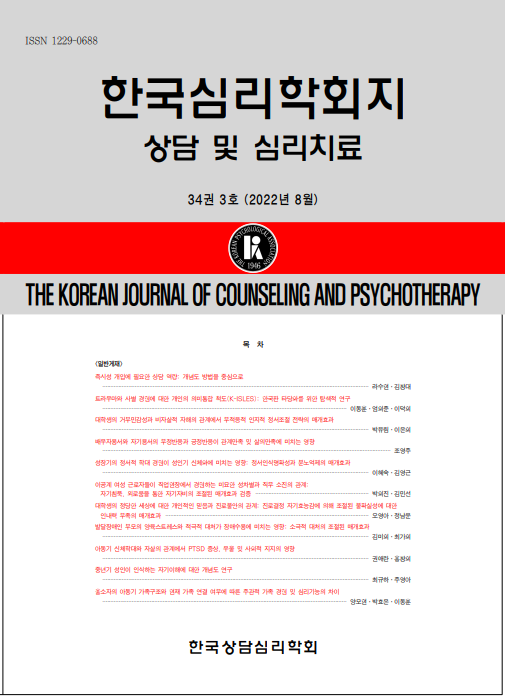open access
메뉴
open access
메뉴 ISSN : 1229-0688
ISSN : 1229-0688
This study examined how a counselor's interpersonal complementarity have to change over the counseling stages. Study 1 examined the relationship between the working alliance and the counselor's complementary responses. It was found that in the early stage there was not only positive correlation between the working alliance and positive complementarity but also negative correlation between the working alliance and negative complementarity On the other hand, no significant relation was found in the middle stage. Study 2. a longitudinal researcch on a relatively 'successful' and an 'unsuccessful' cases, examined how counselor's complementarity pattern changed over the sessions. In the 'successful' case, there was a signifcant 'low-high-low' negative complementarity pattern, while there was a tendency of a 'high-low-high' positive complementarity pattern. In the 'unsuccessful' case. although there was no specific pattern, the level of negative complementarity was generally high from the early sessions. The results imply that in the early stage it is helpful to keep the level of positive complementarity high and negative complemntarity low. But in the middle stage it might be necessary to make negative complementarity gradually high and to lower positive complementarity.
